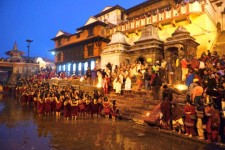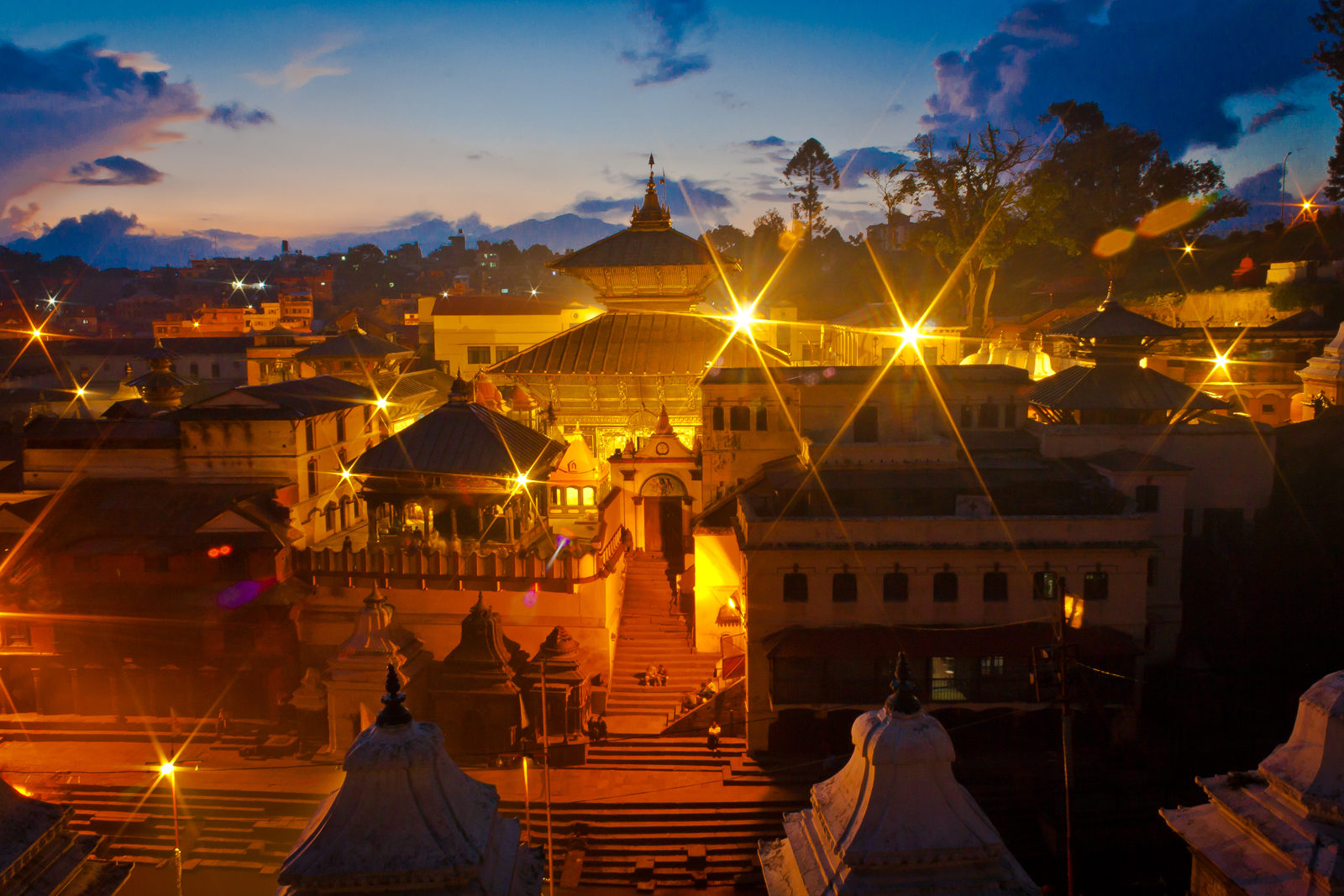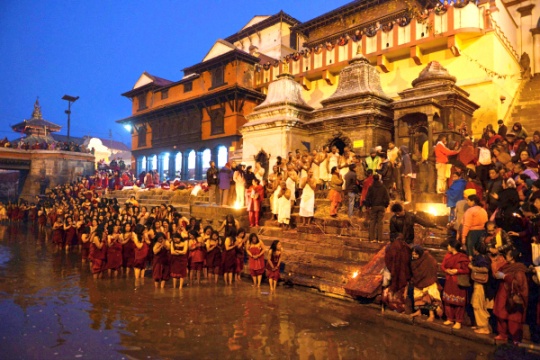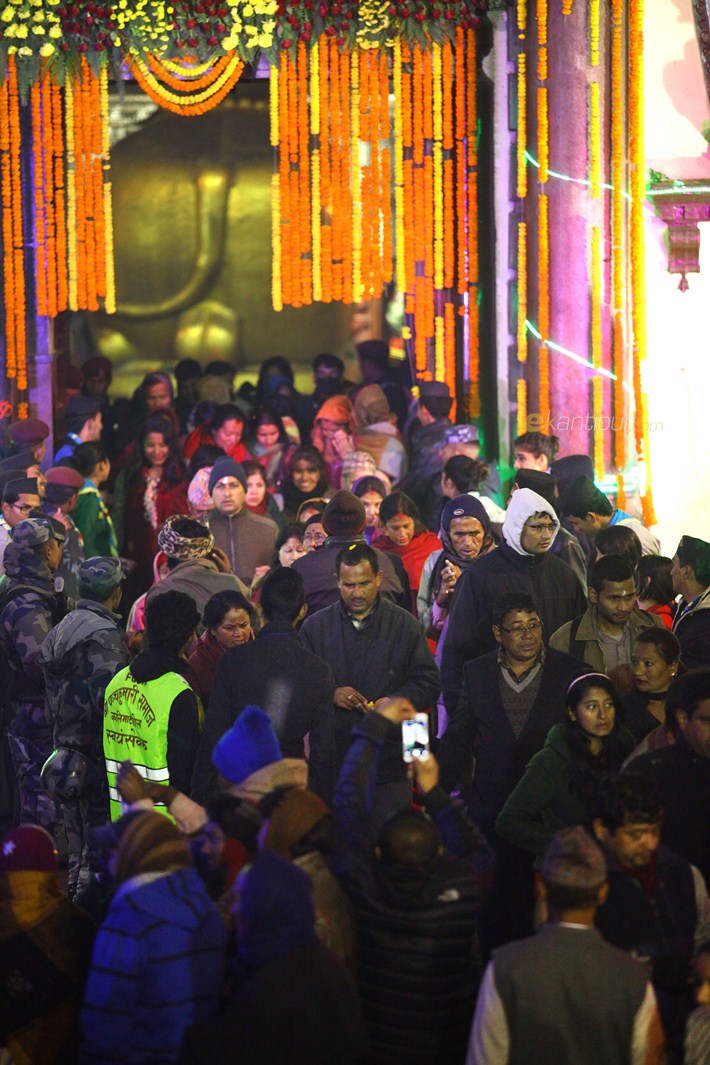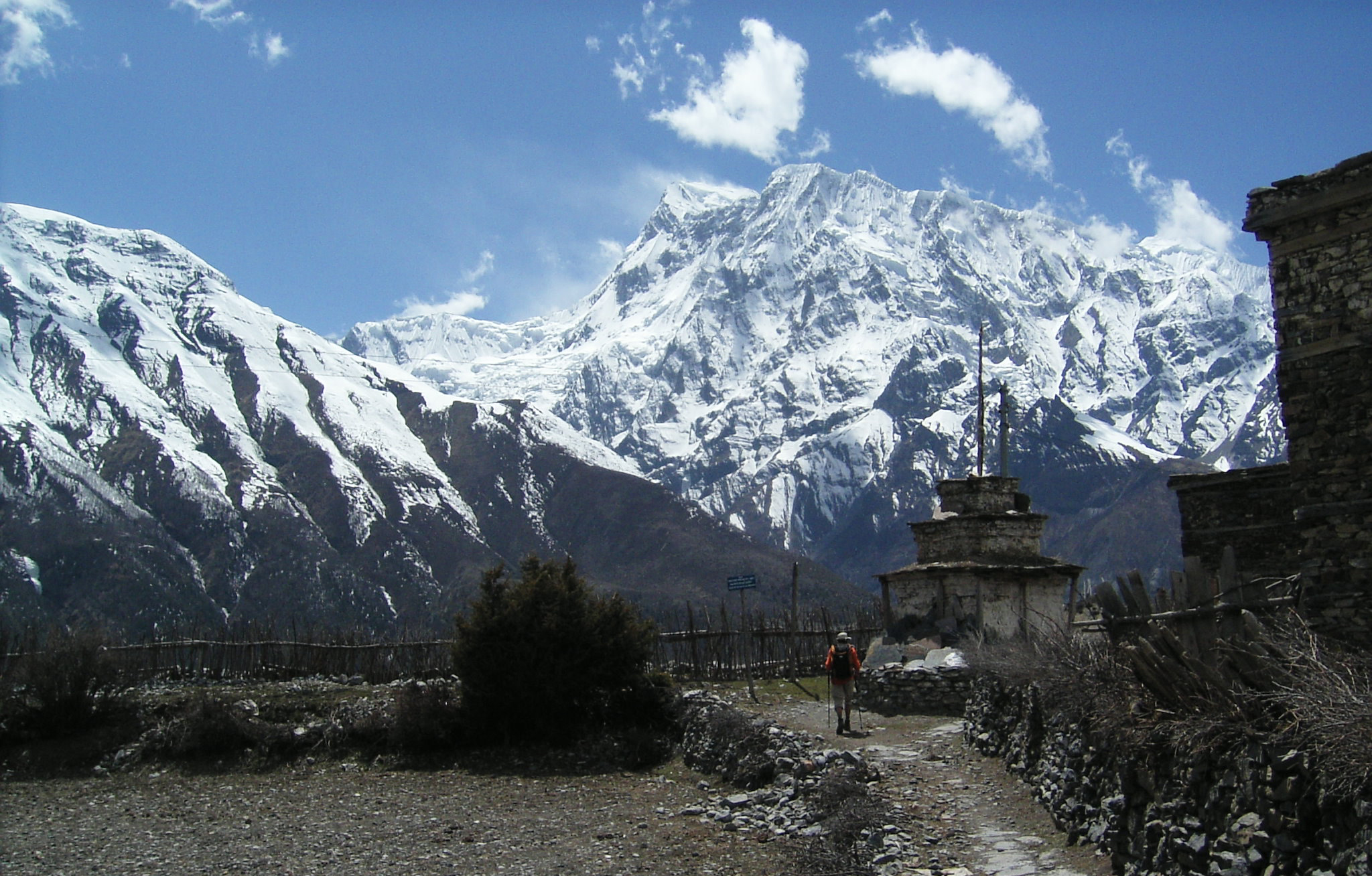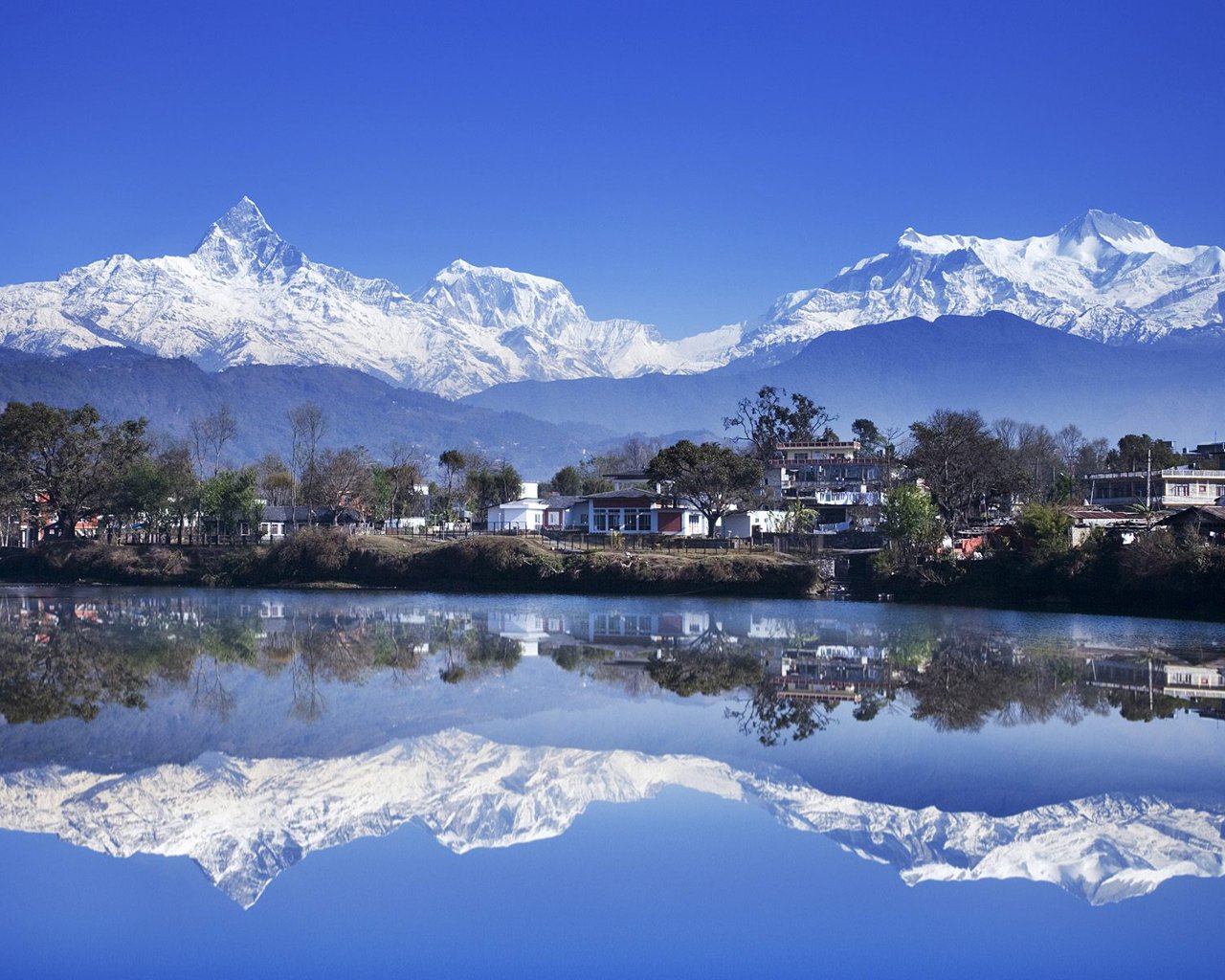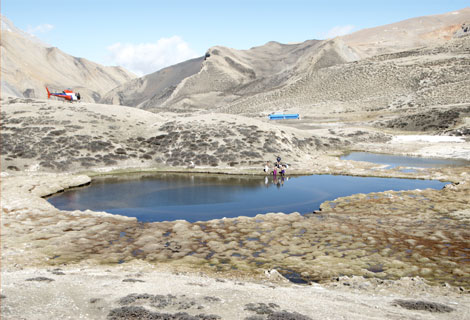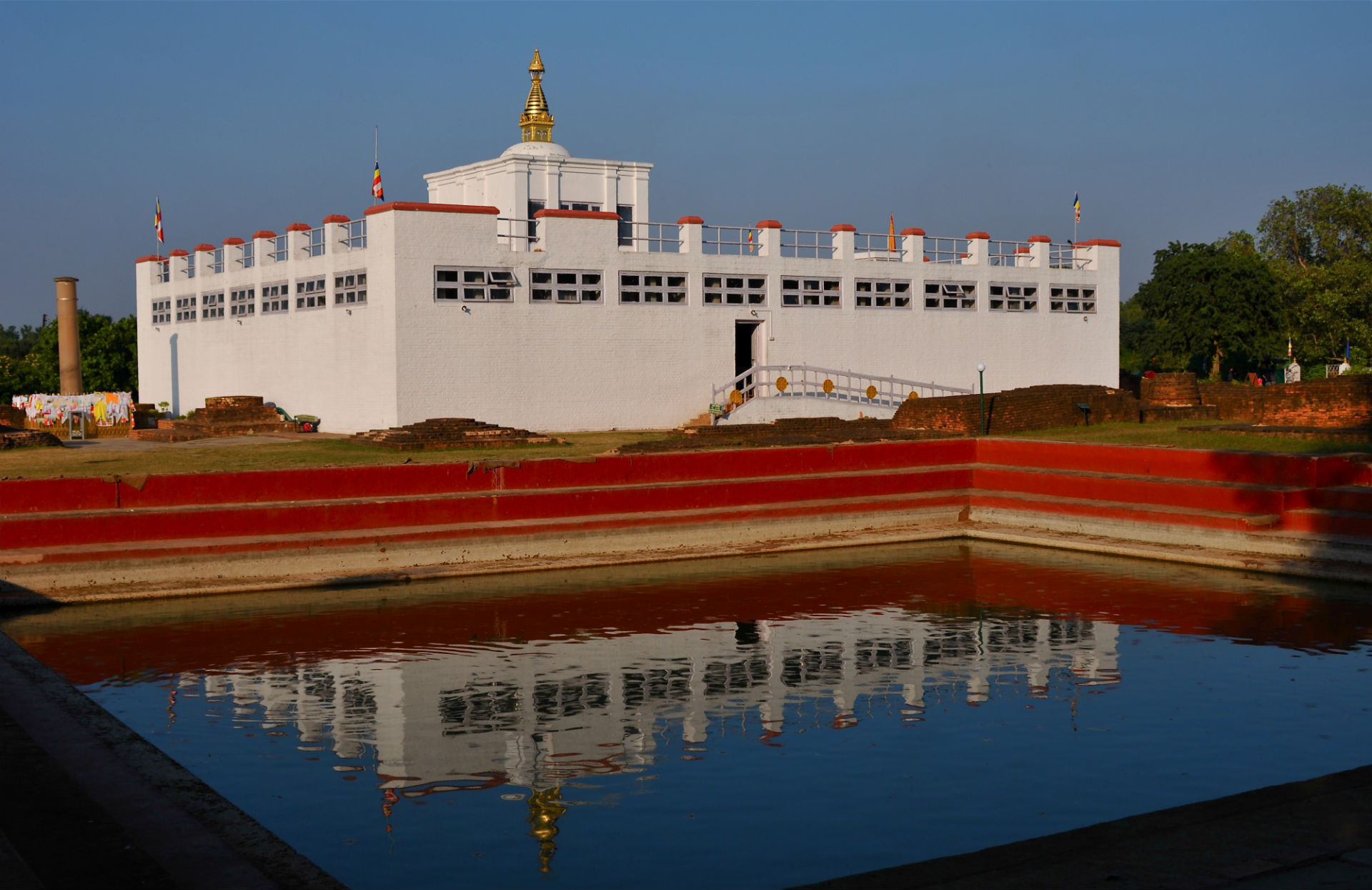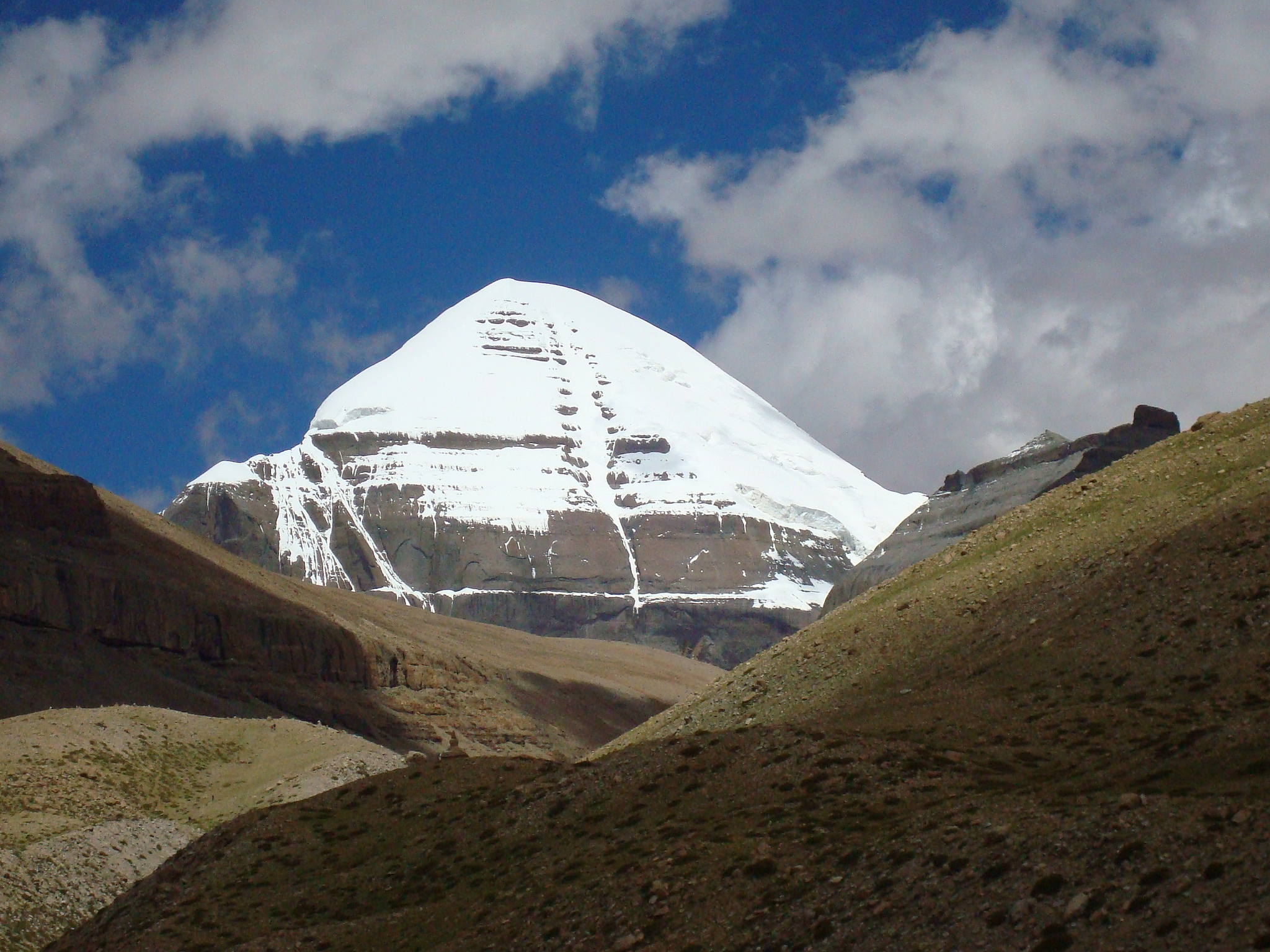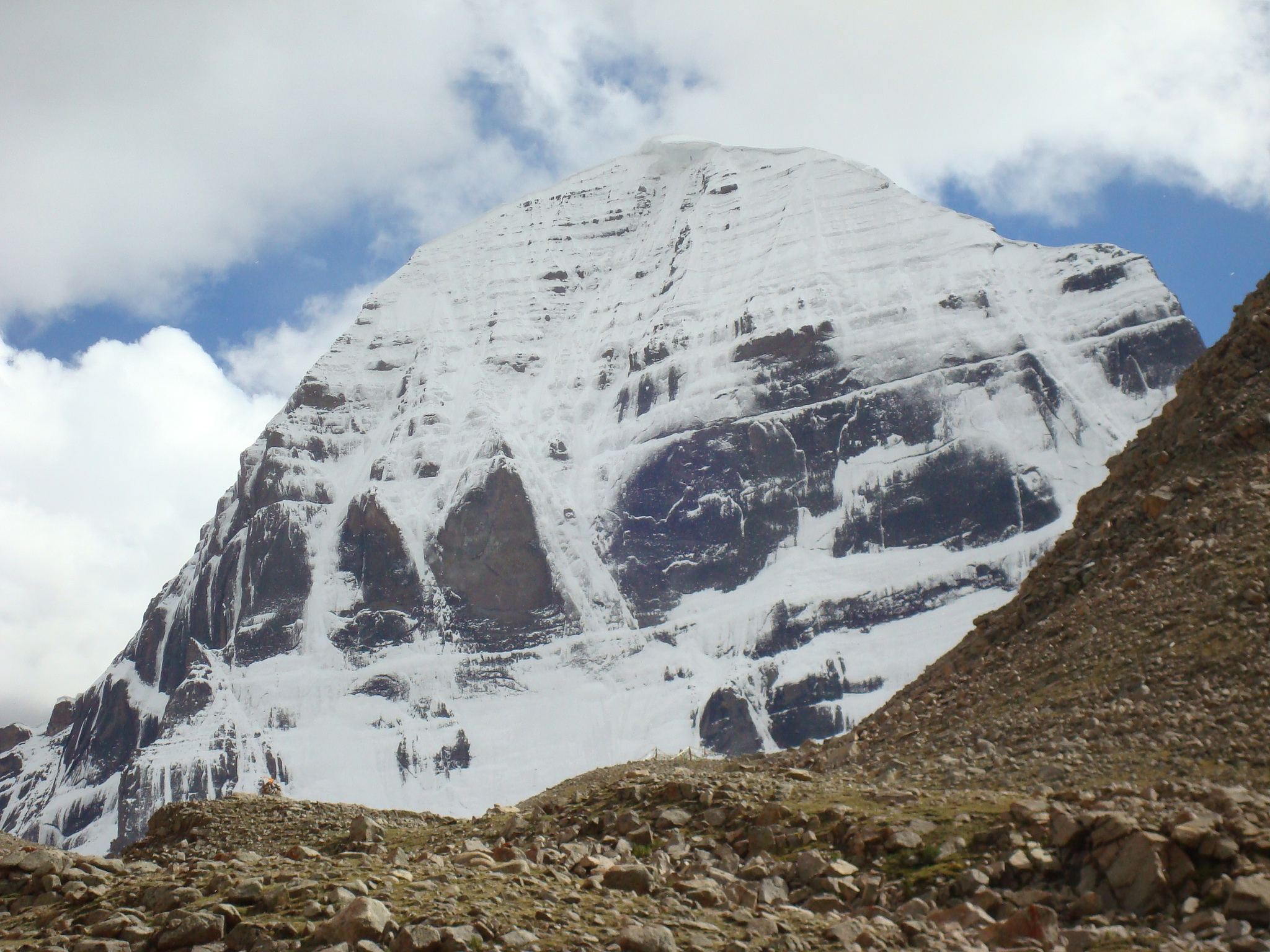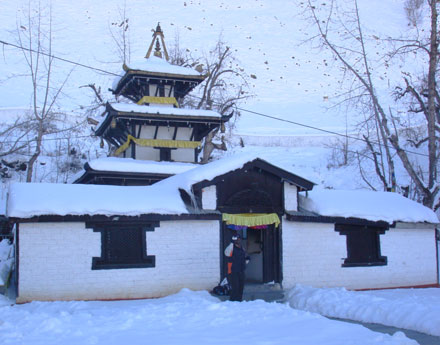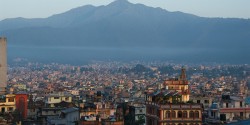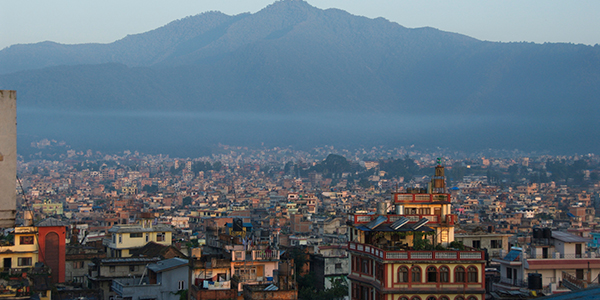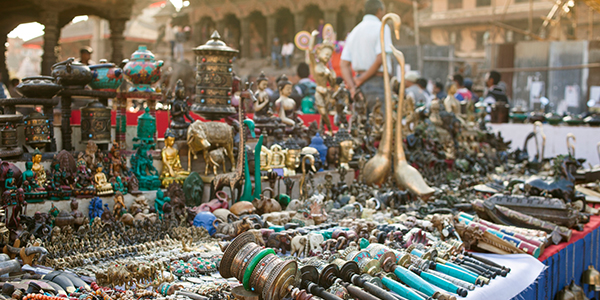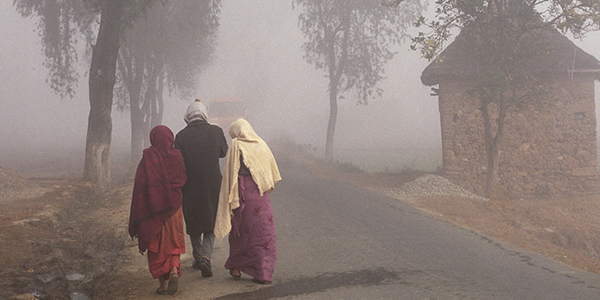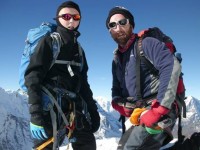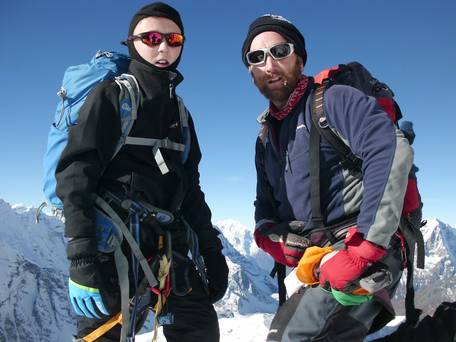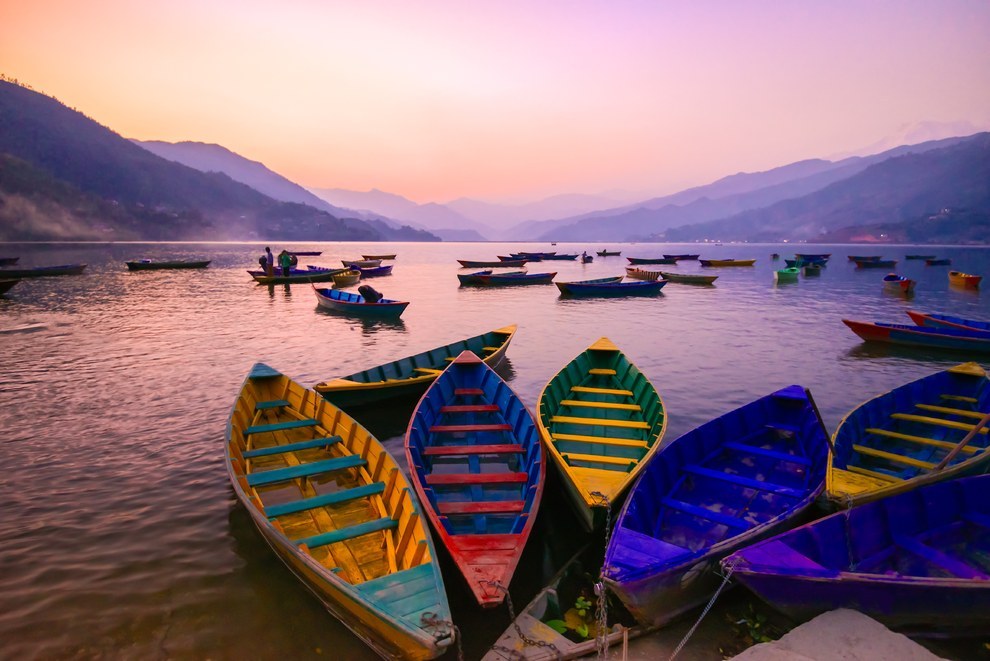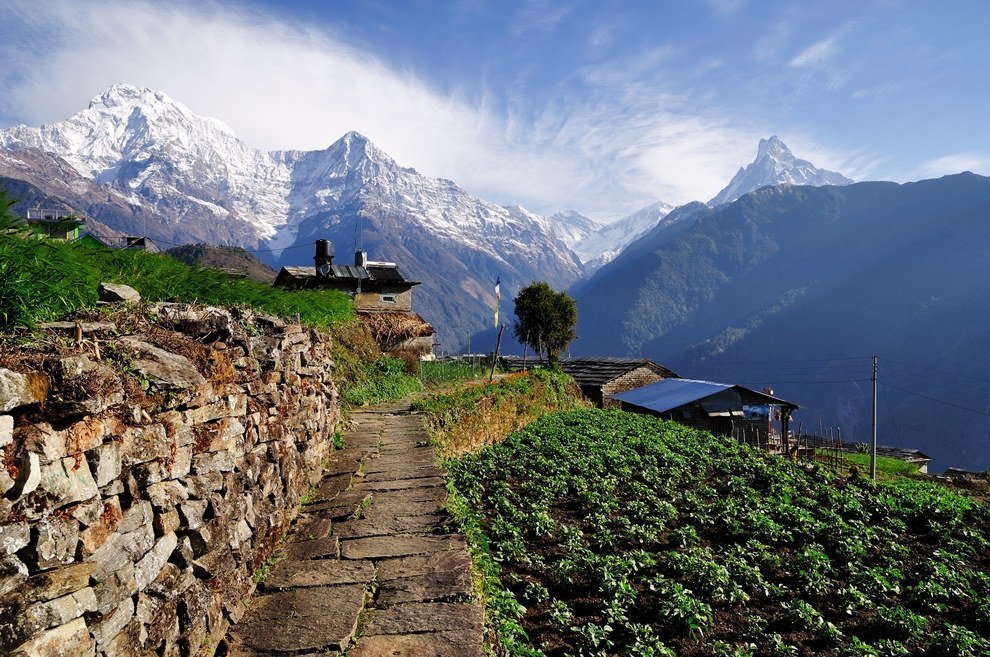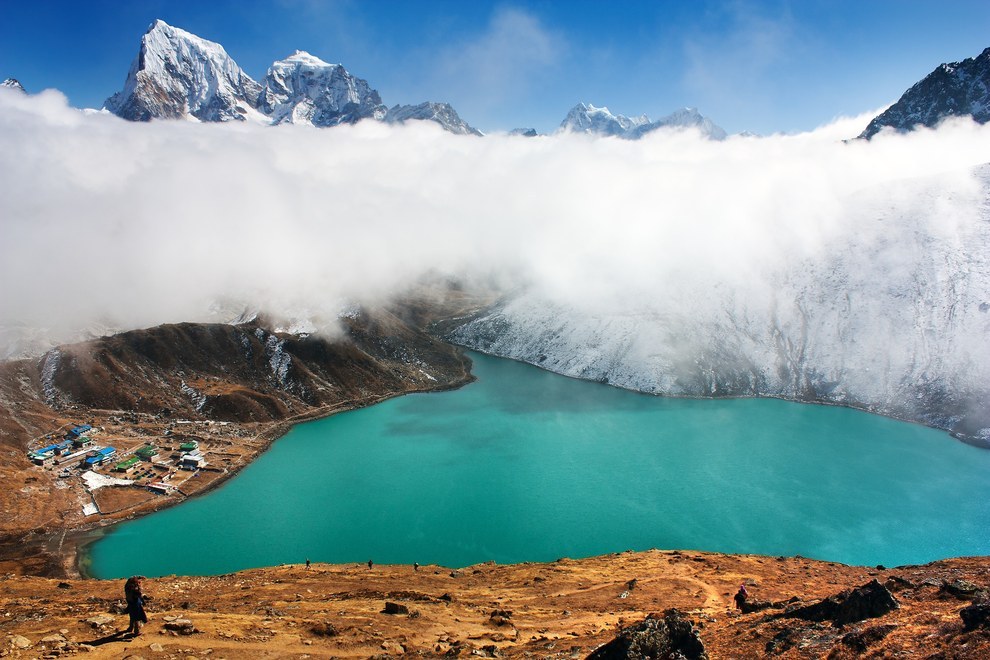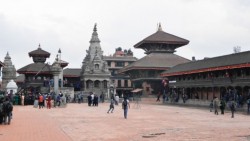
Normally May is the busiest month in Bhaktapur, the decorated old city on the outskirts of Kathmandu. Tourists throng through the narrow alleyways, admiring the intricate wooden carving on temples and stupas (Buddhist holy places) and houses.
Seven UNESCO world heritage sites stood in the valley of Kathmandu, their beautiful pyramid roofs reaching towards the sky.
Bhaktapur’s Durbar Square was one of the most well known sites, located just 10 kilometers from downtown Kathmandu. Each year, more than 100,000 tourists strolled through Bhaktapur, which means “City of the Devotees,” to admire the old city.
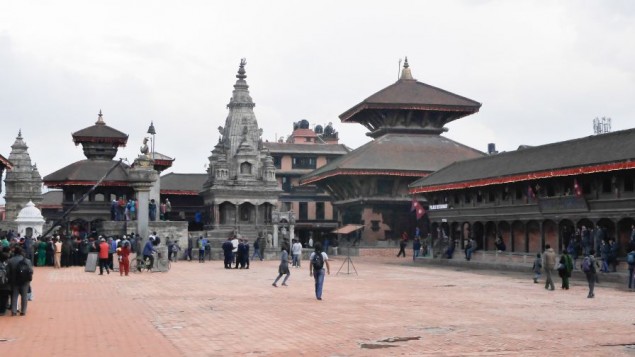
A view of Bhaktapur’s Durbar Square before the April 25 earthquake (Flickr Creative Commons)
But Bhaktapur was also one of the most visible sites of destruction after April 25’s 7.8 magnitude earthquake. Many temples crashed to the ground, destroying more than a century of Nepali patrimony.
Some 10,000 people live in this old and beloved neighborhood. About 300 of them died, and two thirds of the houses were destroyed, according to a local tourism information officer.
As most Nepalis focus on solving the immediate problems of food distribution and semi-permanent housing before the monsoon season begins in June, those involved in the tourism industry are beginning to think about the future. They know that tourism must rebound as quickly as possible in order to minimize the economic damage of the earthquake, and help people begin working again. If tourism doesn’t return to previous levels, the impact of the earthquake will continue to echo for decades to come.
In the aftermath of the quake, the square in Bhaktapur, until recently filled with tourists, was still a hive of activity. Chinese organizations set up a drinking water distribution point. Norwegian doctors erected a small mobile clinic. Samsung ran a “communication hub” with a place to charge phones, use the Internet, and call relatives free of charge.
Hundreds of local Nepalis wandered around the square in shock, standing and looking at the holes in the sky where the temples used to be. A YouTube video from the moment of the quake shot in Durbar Square, the center of Bhaktapur, looks like a bad movie set, towers just crumbling to the ground as people pushed in panic toward the center of the square.
“Here in Bhaktapur, when we saw the Temples were gone, it was like the loss of a child,” said 58-year-old resident Jagat Sherhosai.
“I was born four months after the last earthquake [January 15, 1934],” said Sherhosai’s neighbor, Ratnamaya Suwal, 82. “I was pumping water when this earthquake hit, and that saved my life [because I was outdoors],” she said. “But my heart is beating so fast now. Bhaktapur has lost our pride. And I’m so scared it will happen again.”
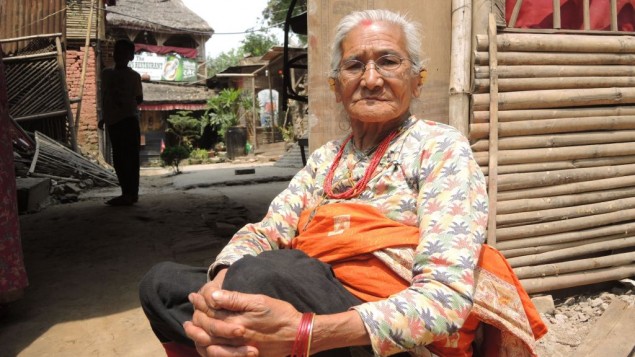
Ratnamaya Suwal, 82, was born four months after the last massive earthquake in Kathmandu. Her house was demolished in the quake. (Melanie Lidman/Times of Israel)
“Tourism is one of the most important sectors in Nepal. In terms of our GDP it’s only about 4%, but in terms of employment it’s at least a million people,” said Tourism Department Director General Tulasi Prasad Guatam.
Nepal’s population is approximately 31 million, with more than 70% of the labor force working in agriculture. The million tourism employees include seasonal workers, like porters, as well as ancillary sectors like handicraft production, restaurants, and transportation.
The initial recovery effort will focus on Kathmandu, to ensure that hotels for international tourists (three stars and above) are structurally sound, explained Guatam. Then experts will check popular tourism sites within the Kathmandu Valley, which experienced significant damage during the quake. Finally, they will start assessing the popular treks and the Lang Tang region to determine how to best rehabilitate those areas.
“For a certain period of time, there is a negative impact, particularly outside of Kathmandu,” said Guatam. “But now you have medical support teams and aid agencies staying in hotels and spending money,” he said.
Tourism is a fast-growing industry in Nepal. In 2014, the Himalayan country hosted 800,000 international tourists, and in 2015, it was expecting 900,000. “For the past five to six years, we’ve been growing in 11%-12% increments each year,” said Guatam. This is largely due to the stabilization of the political situation, after a decade-long civil war against Maoist rebels ended in 2006.
Nepal’s stunning natural beauty drives the majority of tourism. According to government tourism statistics, 46% of visitors went to a National Park or wildlife area.
While some of the most popular treks, including the Lang Tang treks and Everest Base Camp, were devastated by the earthquake, Guatam wants to remind tourists that there is a whole country to discover. “This is an opportunity for new areas of the country that are little explored by tourists,” he said. “The east and far west of Nepal are equally beautiful. People can go visit there, though they may not have the same tourist-level hotels as in the middle areas like Pokhara,” he said.
Due to extreme rain during the monsoon seasons, tourism is highest during March-May and October-November. Trekking agencies know that the current season is no longer an option, as aftershocks continue to terrorize the area, notably a second strong quake on May 12.
But there is great hope that adventurous tourists will return in the fall. “Nepal is the name of adventure tourism,” said Bachchu N. Shrestha, the director of the Pasang Lhamu Sherpa Foundation and World Expeditions Trekking Company. Pasang Lhamu Sherpa was the first Nepali woman to summit Everest, though she died in an avalanche during the descent. Tourism and trekking operators started a foundation in her name to help small entrepreneurs launch tourism businesses in the trekking regions as well as promote women’s empowerment.
“If you love adventure, come to Lang Tang and do tented camping there,” said Shrestha. “The history of Nepalese tourism is very basic. You used to have to carry everything from Kathmandu. If you go back even 15 years in the Lang Tang area, there was tented camping and you had to bring everything.”
Before the quake, tea houses dotted most of the popular routes, so trekkers did not need to carry tents or their own food.
Then there’s also the small but growing segment of “disaster tourism,” harnessing peoples’ curiosity in the disaster to encourage tourism, Shrestha explained. “They did tsunami disaster tourism in Asia,” he said. “Disaster tourism is not a long-term plan; it’s about coming to visit now. Nepal is not dead. Your visit here, your expenditures can make sense to rebuild the community. It’s really to teach people to restart their businesses.”
He knows that people are curious what such a devastating earthquake looks like on the ground, even though there are serious ethical concerns about promoting this type of tourism.
But it’s difficult to imagine how tourism can reemerge in places like Lang Tang, which was completely demolished by the quake and ensuing landslides and avalanches.
Shrestha suggests quickly building houses with an extra room for tourists, who can experience homestays rather than traditional hotel experiences. This kind of travel also appeals to more adventurous tourists who are likely to be the first ones to return to Nepal.
There are also many treks that are unaffected by the quake. The popular Annapurna Circuit is still accessible and did not suffer much damage. Shrestha recommends The Great Himalaya Trail, a 1,700-kilometer walking path that traverses the country from east to west. Some sections will be unusable, but the majority of the trail is still hikeable, he said.
Back in Bhaktapur, shops slowly opened in the alleyways, even though the area was empty of tourists. Some stores opened in buildings hastily propped up with big wooden planks. Other shopkeepers hurriedly tried to remove their merchandise from buildings that looked about to collapse.
“I opened my store because it was too silent in this area,” explained Sanjay Darshandhari, 20, whose store sells the usual tourist offerings of brightly colored bags, magnets, and postcards. “I wanted to help people feel more relaxed. When we didn’t open, it was looking like a ghost place. When we started opening the stores, it’s a psychological thing, that things are getting back to normal.” Since opening, Darshandhari has had about one customer per day make a purchase, compared with more than 100 per day before the quake.
Work is already underway to rebuild the area. Two UNESCO volunteers in hardhats mapped some of the damage at one of the temples. The pair, Ludovic Dusuzeau and Pierre Gerard Bendele, are architects from Paris who were in the country for a month on a private research trip to study old Nepalese architecture. They visited Bhaktapur less than a week before the earthquake.
After the earthquake, they realized that they had detailed drawings of buildings that no longer existed. They decided to extend their trip by three months to volunteer with UNESCO. “It’s quite good to be useful as architects,” said Dusuzeau. “With UNESCO, it’s not only the buildings and temples that are important to preserve but also the urban plan, the streets, the houses. All of it is important from a patrimony point of view,” he said.
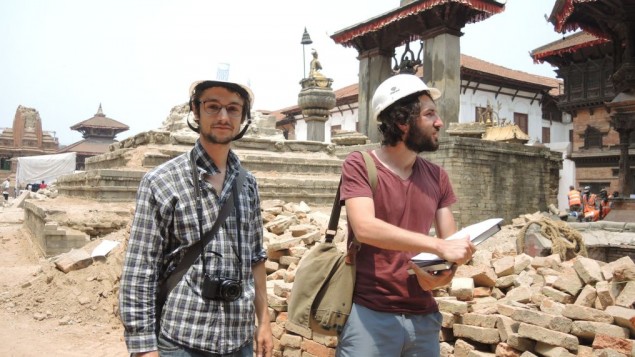
Ludovic Dusuzeau (left) and Pierre Gerard Bendele are two architects from Paris who were on a private research trip to study Nepalese patrimony when the earthquake struck. Now they are volunteering with UNESCO, using drawings they made just a week earlier of things that no longer exist. (Melanie Lidman/Times of Israel)
Damodar Suwal, a tourist information officer in Durbar Square, has trouble imagining what the rebuilt square will look like. For now, he’s concentrating on clearing the rubble from the square and protecting the national artifacts that lay strewn across the ground. Dozens of municipality workers and residents come every day to clean the square, even though their homes have also been destroyed.
They work on their homes in the morning and evening, but spend most of the daytime at the square, helping transform the piles of rubble into neat rows of bricks.
While debris still blocked alleyways in hard-hit parts of Kathmandu, Darbar Square was already partially cleaned and swept, highlighting the pride that locals take in this site.
“The earthquake will affect us positively and negatively,” said Suwal. “The positive part is that it has advertised all over the world that there is this place in Nepal called Bhaktapur that’s very beautiful. The negative aspect is that it destroyed all the temples and palaces. It will take at least ten years to recover. So we’ve been moved ten years aback. But the earthquake has also united all the people of Nepal for Bhaktapur.”
As the neatly stacked piles of rubble grow and the country moves from emergency to recovery phase, rehabilitating the economy is an essential part of rebuilding the country, officials said. Tourism is an inseparable and growing part of the Nepali economy, and one that the international community can affect directly.
“If you love Nepal, come here,” said Shrestha. “That is the message you need to take to the world. Come visit. We need to support the local economy so we can revive ourselves.”
Source: http://www.timesofisrael.com





